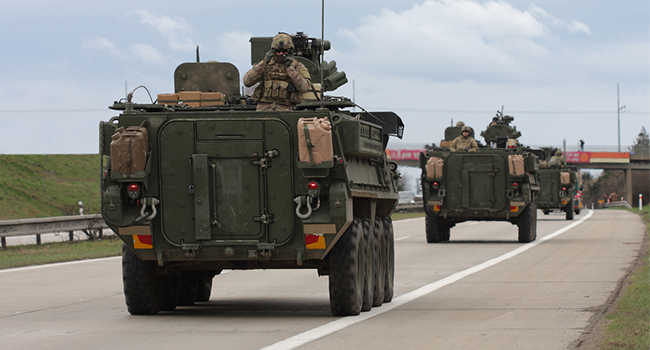
Trump Lifts Military Gear Ban for Local Police
The Trump administration will unveil a new plan to lift a controversial ban on the transfer of surplus military gear to police departments, rolling back an Obama administration executive order issued three years ago.
The Trump administration will unveil a new plan to lift a controversial ban on the transfer of surplus military gear to police departments, rolling back an Obama administration executive order issued three years ago following controversy over the "militarization" of the police response to rioting in Ferguson, Mo.
The new plan, outlined in documents obtained by USA Today, will roll back limits that blocked armored vehicles, high-caliber weapons, grenade launchers, ammunition and other heavy equipment from being re-purposed and given to local law enforcement agencies.
Local access to military gear was put on national display in 2014 in Ferguson, where armored vehicles and heavily-armed police clashed with protesters for days after the police shooting of an unarmed 18-year-old black man by a white officer.
"We've seen how militarized gear can sometimes give people a feeling like there's an occupying force as opposed to a force that's part of the community that's protecting them and serving them," Obama said while announcing the ban in 2015. "It can alienate and intimidate local residents and send the wrong message."
The 1033 program was originally launched by Congress in 1990 as part of the National Defense Authorization Act, which allowed the Defense Department to transfer extra hardware and equipment to state and local law enforcement to use in "counter-drug activities." The program has resulted in the transfer of more than $5.4 billion worth of military gear since the 1990s.
The Trump administration's action would restore "the full scope of a longstanding program for recycling surplus, lifesaving gear from the Department of Defense, along with restoring the full scope of grants used to purchase this type of equipment from other sources,'' according to an administration summary of the new program circulated to some law enforcement groups.
On Monday, President Donald Trump will sign a new executive order rescinding Obama's directive and Attorney General Jeff Sessions will address the annual conference of the Fraternal Order of Police, the nation's largest police union, in Nashville, Tenn., where he may outline the program changes.